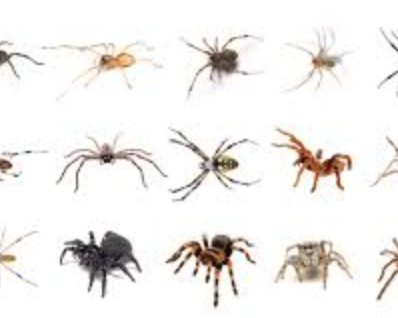Last Updated on 05/20/2025 by Kimberly
Dealing with fleas and ticks can be a real headache for pet owners. These tiny critters are more than just an annoyance; they’ve got a real knack for causing trouble if left unchecked. This article sets out to figure out what’s more dangerous for pets, fleas or ticks?
When it comes to pet health, pests play a sneaky role. Fleas and ticks can cause serious discomfort and health issues for pets. Understanding how these pests operate and their potential dangers is key to protecting your companions.
Those who love their pets know how crucial it is to spot the differences between fleas and ticks. Both might be small, but their impact can be big. One may spread diseases, while the other can cause severe allergic reactions, making it important to know what you’re dealing with.
This article aims to explore the distinct dangers posed by these pests and help tailor prevention strategies. We’re not just covering the basics; we dive deep into why and how these pests affect animals, potentially making one a bigger threat than the other.
The focus here is on promoting prevention and quick treatment, giving you the tools needed to keep your beloved pets safe and sound. Whether it’s insights on spotting these pests early or tips on effective vet treatments, we’re covering it all.
Fleas: Tiny Insects with a Nasty Bite
Fleas, despite their small size, can cause significant discomfort. They jump like little acrobats from host to host, multiplying quickly. These insects thrive in warmer conditions, making them a year-round concern in many places.
Recognizing a flea infestation early can prevent a world of problems. Look for excessive scratching, hair loss, or red, irritated skin on your pet. These are classic signs that fleas are making themselves at home.
The aftermath of flea bites can go beyond the itch. Pets often suffer from flea allergy dermatitis, a condition causing intense discomfort. Left unchecked, fleas might spread tapeworms and other infections to your beloved friends.
The diseases fleas can carry shouldn’t be underestimated either. They are known to transmit ailments like Bartonella, which can impact a pet’s long-term health. The impact is more than just physical discomfort; there are real health risks at play.
Staying proactive is your best bet against these pests. Regular grooming and effective flea treatments from your vet can keep infestations at bay. It’s all about staying one step ahead to protect the well-being of your pets.
Ticks: Silent Spreaders of Deadly Diseases
Ticks may not seem fast, but their stealth is what makes them dangerous. Lurking in tall grass and wooded areas, they latch onto unwary pets, often going unnoticed for days.
One of the major health threats from ticks is their role as vectors for serious diseases. They transmit Lyme disease, ehrlichiosis, and Rocky Mountain spotted fever, to name just a few. The longer a tick is attached, the higher the chance of pathogen transmission, making early detection crucial.
Monitoring your pet for tick-borne disease symptoms is essential. Watch for signs such as fever, joint pain, swelling, or lethargy after potential exposure. These indicators can be subtle, but catching them early can make a huge difference in treatment outcomes.
Ticks vary in species, and each has its own habitat preferences and disease capabilities. Understanding which ticks are prevalent in your area can help in developing a targeted prevention plan, crucial for keeping pets safe even when outdoors.
The long-term health effects associated with ticks are not to be underestimated. Some tick-borne diseases cause chronic conditions affecting your pet’s quality of life. That’s why awareness and prevention are your best defenses against these silent invaders.
Weighing the Risks: Fleas vs. Ticks
Both fleas and ticks carry their own sets of risks, and understanding these is key to effective prevention and treatment. The dangers they pose aren’t uniform, varying based on environmental factors and pet species, making a closer look at each essential.
Fleas are known for causing allergies and skin infections, but the likelihood of disease transmission, although serious, is somewhat less frequent compared to ticks. Flea infestations can spiral quickly due to their rapid reproducing nature, potentially making them a more immediate concern.
Ticks, on the other hand, are infamous for the diseases they carry. From Lyme disease to anaplasmosis, the health stakes with ticks are often higher. Their ability to transmit illness with just a single bite puts pets at significant risk during tick season.
Considering environmental exposure is critical. Pets in wooded or grassy regions might face higher tick exposure, while urban animals could encounter fleas more often. Recognizing these factors helps tailor prevention strategies effectively.
Another element to consider is the pet’s lifestyle and health condition. Outdoor dogs, for example, might need more rigorous tick prevention, while indoor cats might be more affected by fleas. Tailoring protection measures to these nuances ensures comprehensive care.
Ultimately, assessing the risks based on your pet’s environment and habits is crucial. This not only helps in prioritizing preventive measures but also in reacting swiftly when a problem arises.
Protecting Your Pet: Strategies for Prevention and Control
Keeping fleas and ticks at bay requires a mix of proactive measures and timely interventions. Taking steps early on can save a lot of hassle down the road, ensuring your pets remain healthy and comfortable.
You can start with preventive treatments that shield pets from both fleas and ticks. These include topical solutions, oral medications, and collars recommended by veterinarians. Regular treatments are crucial, as they provide year-round protection against these persistent pests.
For those who prefer doing things at home, maintaining a clean environment plays a vital role. Regularly vacuuming carpets and washing pet bedding can curb flea infestations. Keeping your yard tidy also reduces tick habitats, limiting exposure during outdoor activities.
Chalk up a prevention plan by considering the seasons, as flea and tick populations can vary. Check online or ask your vet about local pest activity patterns to stay ahead. Tailoring your strategy to these fluctuations ensures you’re addressing the problem when it’s most likely to occur.
Empowering yourself with knowledge is one of the best tools. Learn how to inspect your pet for ticks after outdoor adventures and recognize early signs of flea infestations. The more you understand about these pests, the better you can protect your furry friend from potential health issues.



I can’t choose which is more pesky – the tick or the flea, but mostly they always seem to be bundled together.
Ticks I think can be more dangerous, as often we don’t spot them until a few days later, and by then they could have spread any number of diseases to their hosts.
Fleas on the other hand are irritating, because when they bite, you know about it for days and to find the critters is a problem.
Thank you for the helpful advice your article has given us, so that we can take better steps to prevent outbreaks of both these nasty critters.